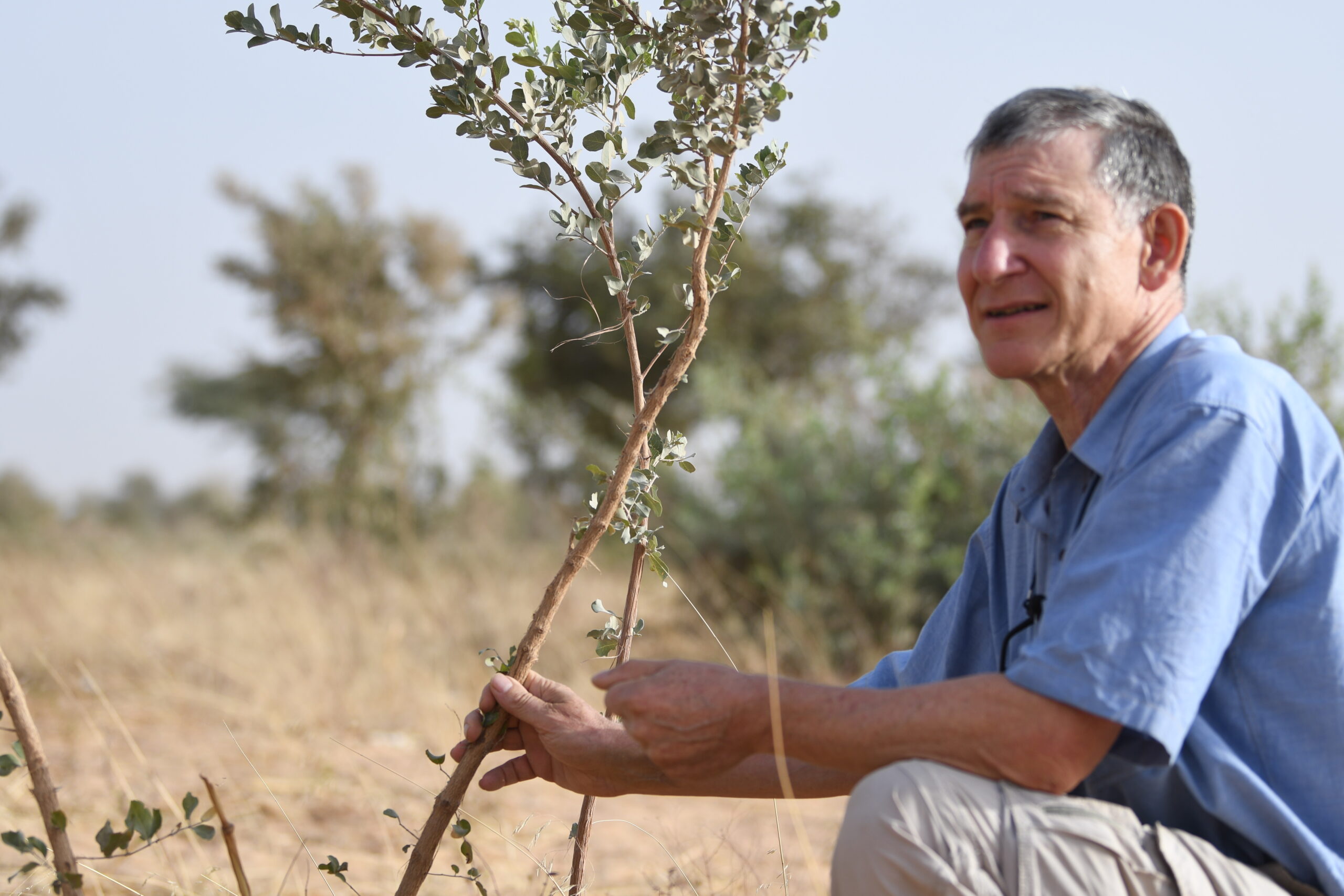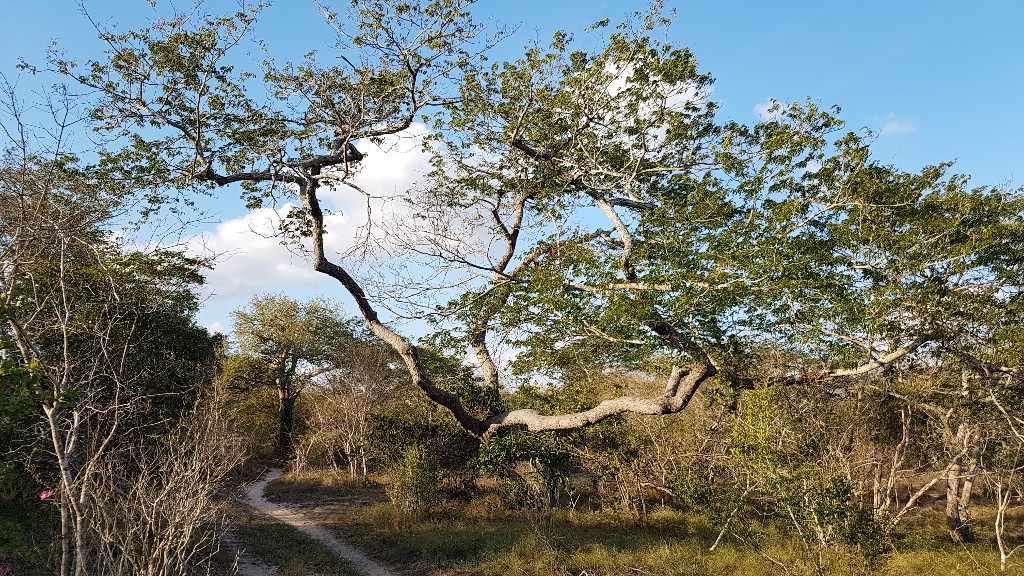Reforesting the world
How one farmer’s dogged persistence and a resolute faith in God has successfully brought back forest to over 6 million hectares in West Africa and counts 240 million trees to his name.

In 1981 Tony Rinaudo and his wife moved from Australia to the Niger Republic on the edge of the Sahara Desert. Somewhere, somehow, they wanted to make a difference. But after two years of intense tree-planting and trying to coax some life from the arid landscape regularly devastated by severe drought, he despaired.
‘We ran a typical reforestation project relying on tree planting. In this very hostile environment, establishment rates were very low. In fact, it was quite futile, and I was ready to give up, but I believed that God had called me to Niger to make a difference, though I didn’t know how. 2 Peter 1:3 was a mystery to me [“By his divine power, God has given us everything we need for living a godly life. We have received all of this by coming to know him, the one who called us to himself by means of his marvellous glory and excellence.”]. I didn’t think God had included Niger when he said that he had provided everything that we needed for life (our physical bodies), though I believe the Bible is true.
What I didn’t realize was that before this landscape was altered, it provided abundantly. What I didn’t know was that by working with nature much of that abundance could be restored. However, it was the environmental degradation that I witnessed that moved me to work in this area of reforestation and sustainable agriculture and land use.
Ephesians 2:10 says, ‘For we are God’s handiwork, created in Christ Jesus to do good works, which God prepared in advance for us to do.’ Living here, dust storms became a common occurrence. Some days it was hard to see even 50 metres ahead because of dust storms. The impacts of the 1984 Sahel drought and famine were greatly multiplied by the effects of deforestation.
Many projects attempted to solve the problem by planting trees. However, there were enormous problems even in the nursery – water shortage, birds, lizards, frogs, grasshoppers, termites, goats and cattle all made it extremely difficult to raise seedlings. The constant, daily need to draw water by hand from 50 – 100-metre deep wells meant that few farmers wanted to raise trees.
It is estimated that in Niger 60 million trees were planted from nurseries over a 20-year period, with less than 20% survival. I felt very discouraged. I looked north, south, east, west and thought that if we continued to use this nursery and tree planting technique, at this rate it would be impossible to revegetate the land on a large enough scale to make an impact. How many million dollars would I need? How many decades would it take? And it was the same story all over West Africa. I knew perfectly well that 80 or 90% of the trees I was carrying [in my car] for planting would die.
For me the solution came as an answer to prayer. I saw for the first time what I had seen all along but hadn’t recognized. There are millions of living tree stumps in farmlands, grazing lands and degraded forests across Africa and other countries with the potential to regrow into trees, if we give them a chance.
In that moment, everything changed. We didn’t need to plant trees. It wasn’t a question of having a multimillion-dollar budget and years to do it: everything you needed was in the ground.
Nature would heal itself; you just needed to stop hammering it.
So Farmer Managed Natural Regeneration (FMNR) was born and the systematic regeneration and management of trees and shrubs growing from living tree stumps, roots and seedlings began. In the field, after clearing sections of the land, we were left with tree stumps. Shoots supported by a mature root system full of stored energy feed the shoot growth and cause them to grow very quickly.
It’s an embarrassingly simple solution to what appeared to be an intractable problem. But it involved overturning generations of accepted wisdom, and a resistance to giving some land back to nature.
When you’ve got people who are on the edge of starvation every year, not just in famine years, you’ve got this perception that you need every square inch of farmland to grow food crops. And here’s this nut of a person telling people they should sacrifice some of their land for trees.
I was known then as ‘the crazy white farmer’ but I managed to convince ten farmers in as many villages to back our plan to allow trees to regrow across the land they’d been intensively farming for decades. A drought was the catalyst for a work-for-food programme, which brought reluctant farmers into the fold, but when the farming yields were, at first, no worse, then better, then dramatically so, the new technique took off.
After over more than 30 years in west Africa, more than 6 million hectares have been regenerated. The farmer-managed natural regeneration technique is responsible for 240 million trees regrowing across that parched continent. The reforested landscape can be seen on satellite images from space.
The trees improve farming yields, reduce ground temperatures and hold water in the soil. They provide firewood and make farming, in places where the temperature regularly reaches 40C, more comfortable. In Niger today, FMNR has spread to over 50% of the farmland or 5-6 million hectares. And the results are staggering: farmers produce half a million more tonnes of cereal per year than in the 1970s and 1980s. As a result, 2.5 million people are now more food secure and no longer on the brink of malnutrition. Five indigenous fruit species have begun bearing fruit. Some of these fruits have not been seen in 40 years.
The rewards are enormous. The Chief of Yameriga, Yamdaan Zimbil Longmoare in Ghana, was so overjoyed by the changes witnessed in his village in the space of two years that he said, ‘God cares even about tree stumps! This gift of FMNR is from the Almighty God and therefore anywhere you visit brings life and joy.’
Author
Tony Rinaudo served as an agriculturalist and missionary with ‘Serving in Mission’ in Niger Republic from 1981 to 1999. He now works for World Vision, Australia and has taken his technique across the world, from arid Somaliland to tropical East Timor. For his work on regeneration, Tony was recognised in 2018 in the Right Livelihood Awards, often described as the alternative Nobel Peace Prize, but focuses on fields such as environmental protection, human rights sustainability and peace.
His autobiography was published in April 2022 and is widely available now: The Forest Underground: Hope for a Planet in Crisis.



